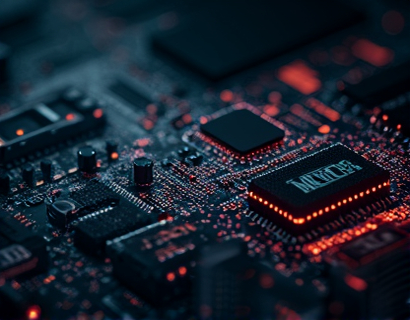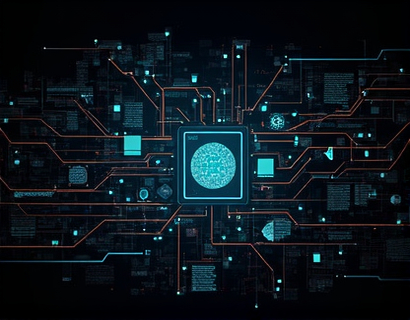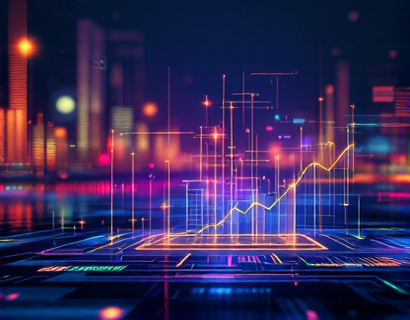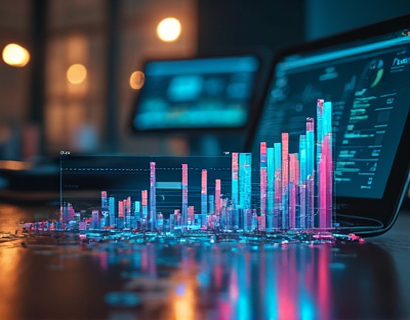Next-Gen Smart Contract AMMs: Revolutionizing DeFi Trading with Advanced Automation and Liquidity Management
The decentralized finance (DeFi) ecosystem has witnessed unprecedented growth and innovation, with smart contract-based Automated Market Makers (AMMs) emerging as a pivotal component. These AMMs leverage advanced automation and liquidity management to redefine the trading experience in the crypto space. This article delves into the cutting-edge technology behind next-generation smart contract AMMs, exploring how they optimize liquidity management and automate trading strategies to ensure seamless and efficient market interactions for crypto traders and DeFi enthusiasts.
The traditional AMM model, while revolutionary in its own right, has certain limitations that next-gen AMMs aim to address. The core mechanism of a standard AMM involves a liquidity pool where users deposit tokens to create a pool, and trades are executed based on a predefined formula that maintains the pool's balance. However, this approach can lead to issues such as impermanent loss, where liquidity providers may lose value compared to holding the tokens directly, and limited liquidity during high-volatility periods.
Next-generation smart contract AMMs introduce advanced algorithms and protocols to mitigate these issues. One significant improvement is the implementation of dynamic liquidity provision mechanisms. These mechanisms adjust the liquidity pool's composition in real-time based on market conditions, ensuring that the AMM remains liquid and efficient even during periods of high volatility. This dynamic adjustment helps in minimizing impermanent loss and provides a more stable trading environment for users.
Another key feature of next-gen AMMs is the integration of advanced automation tools. These tools enable users to set up complex trading strategies with minimal effort. For instance, users can create arbitrage bots that automatically exploit price discrepancies across multiple decentralized exchanges (DEXs) or pair specific tokens to lock in favorable trading conditions. This level of automation not only enhances the trading experience but also opens up new opportunities for algorithmic trading in the DeFi space.
Liquidity management is a critical aspect of any AMM, and next-gen solutions have taken this to new heights. Traditional AMMs rely on fixed liquidity pools, which can be suboptimal in rapidly changing market conditions. Next-gen AMMs introduce adaptive liquidity management systems that dynamically allocate liquidity across various assets and pools based on real-time demand and supply. This ensures that liquidity is always available where it's needed most, reducing slippage and improving trade execution efficiency.
One of the most innovative features of these advanced AMMs is the incorporation of machine learning (ML) algorithms. ML models can analyze vast amounts of market data to predict price movements and optimize liquidity provision accordingly. For example, an ML-driven AMM can identify trends and adjust the liquidity allocation to capitalize on emerging opportunities or mitigate potential losses. This level of intelligence not only enhances the AMM's performance but also provides users with a more robust and responsive trading platform.
The user interface and experience (UI/UX) of next-gen AMMs have also seen significant improvements. Gone are the days of clunky, hard-to-navigate platforms. Modern AMMs are designed with user-centric design principles, offering intuitive interfaces that make complex trading strategies accessible to both novice and experienced traders. These platforms often include real-time market data visualization, customizable dashboards, and streamlined transaction workflows, making the trading process more efficient and enjoyable.
Security is another paramount concern in the DeFi space, and next-gen AMMs have taken substantial steps to enhance their security protocols. These platforms employ multi-signature wallets, regular audits by reputable security firms, and decentralized governance models to ensure the integrity and safety of user funds. By prioritizing security, these AMMs build trust among users and foster a more secure trading environment.
The integration of cross-chain capabilities is another distinguishing feature of next-gen smart contract AMMs. As the DeFi ecosystem expands beyond Ethereum to other blockchains, the ability to seamlessly trade across different networks becomes increasingly important. Cross-chain AMMs enable users to access liquidity and execute trades across multiple chains, breaking down silos and creating a more interconnected DeFi landscape. This interoperability not only enhances liquidity but also provides users with more choices and flexibility in their trading strategies.
In terms of scalability, next-gen AMMs are designed to handle high transaction volumes without compromising performance. Leveraging layer 2 solutions and optimized smart contract code, these platforms can process a large number of trades per second, ensuring that users experience low latency and high throughput. This scalability is crucial for maintaining the AMM's effectiveness in fast-paced trading environments where every millisecond counts.
The impact of next-gen smart contract AMMs on the DeFi ecosystem cannot be overstated. By optimizing liquidity management and automating trading strategies, these AMMs are reshaping how traders interact with the market. They provide a more efficient, secure, and user-friendly trading experience, attracting a broader audience to the DeFi space. As more developers and users adopt these advanced AMMs, the overall ecosystem is expected to become more robust and resilient.
Moreover, the adoption of next-gen AMMs is driving innovation in other areas of DeFi. For instance, the principles of dynamic liquidity provision and ML-driven optimization are being applied to lending, borrowing, and yield farming protocols, leading to more sophisticated and user-friendly financial products. This cross-pollination of ideas and technologies is accelerating the evolution of the DeFi landscape, making it more accessible and appealing to a global audience.
In conclusion, next-gen smart contract AMMs represent a significant leap forward in DeFi trading technology. By addressing the limitations of traditional AMMs and incorporating advanced features such as dynamic liquidity management, automation, and cross-chain capabilities, these platforms are setting a new standard for decentralized trading. As the DeFi ecosystem continues to grow and mature, the role of these innovative AMMs will become increasingly vital, paving the way for a more efficient, secure, and user-centric financial future.











































